Ready to dive into some famous Australian landmarks? There’s more to Australia than kangaroos, koalas and Vegemite! From the iconic sails of the Sydney Opera House to the magic of Uluru to the wonder of the Great Barrier Reef, here’s the lowdown on the Land Down Under’s most famous spots.
#1. The Sydney Opera House
Located in Sydney Harbour in New South Wales, the Sydney Opera House, with its distinctive sail-like shells, creates a unique silhouette against the skyline. This is by far, one of the most famous Australian landmarks. Designed by Architect Jorn Utzon and completed in 1973, it now has UNESCO World Heritage status for its groundbreaking design. Not to mention its significance as a global cultural landmark. Hosting over 1,500 performances annually, it’s a world-class venue for opera, ballet, theatre and concerts.

#2. The Great Barrier Reef
Found off the coast of Queensland, the Great Barrier Reef is the world’s largest coral reef system, spanning over 2,300 kilometres. Unsurprisingly, this Australian landmark is also a UNESCO World Heritage site. Boasting an incredibly diverse amount of marine life, most visitors come here for the amazing snorkelling and diving experiences. Due to the threat of environmental concerns and climate change on its ecosystem, conservation efforts to preserve this natural wonder are critical.
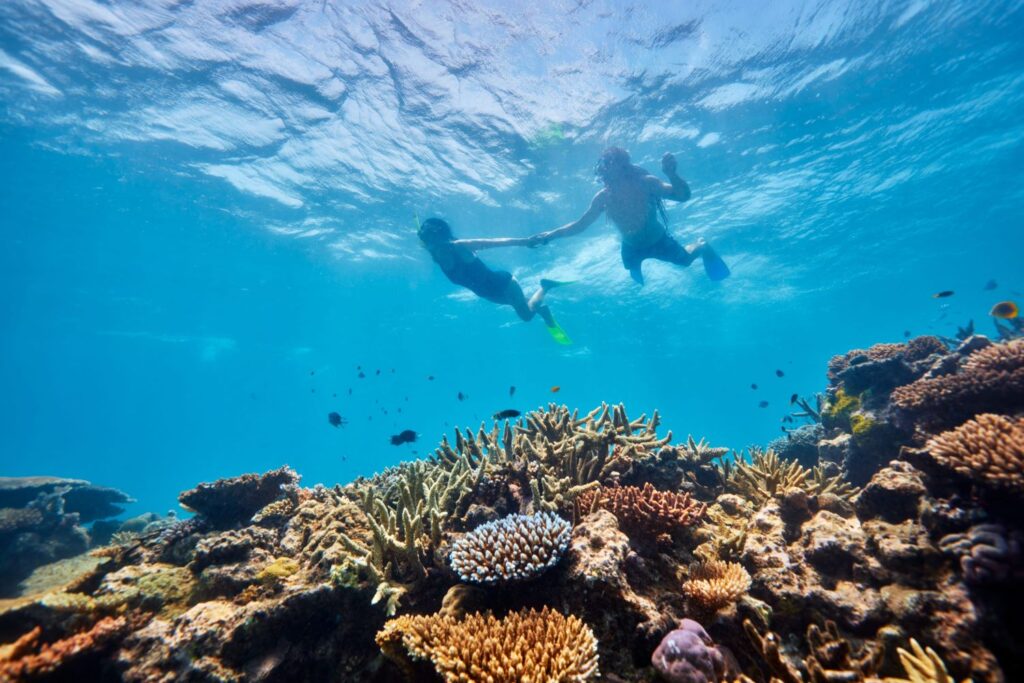
#3. Uluru
It’s hard not to picture Uluru when you think of Australian landmarks, and for good reason. Sacred to the Indigenous Anangu people, Uluru is a massive sandstone monolith that rises 348 metres above the surrounding desert in the heart of Australia’s Northern Territory. This UNESCO World Heritage site is renowned for its colour-changing hues at sunrise and sunset. With its ancient rock art, spiritual energy and cultural significance, visitors seeking to experience Outback Australia and connect with Australia’s Aboriginal heritage won’t go wrong with Uluru.
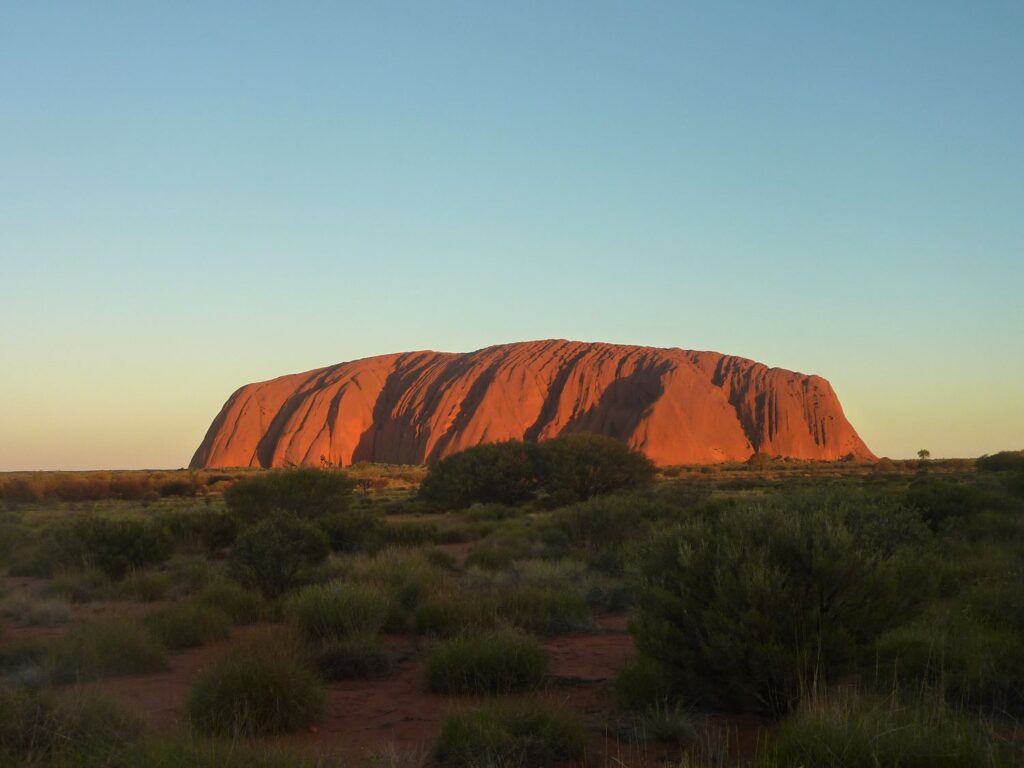
#4. The Twelve Apostles
Despite their name, only eight of these majestic limestone stacks known as the Twelve Apostles remain. Standing proudly against the Southern Ocean along the Great Ocean Road in Victoria, nature has carved them into sculptures, and with the rugged coastal cliffs providing a dramatic backdrop to these Australian landmarks, it’s no wonder they attract visitors worldwide. Try to time your visit with sunrise or sunset for the nicest colours.

#5. The Sydney Harbour Bridge
Spanning the iconic Sydney Harbour in New South Wales, the Sydney Harbour Bridge is 502 metres long and 134 metres high. This makes it one of the most easily recognisable Australian landmarks. Locals sometimes refer to it as the ‘Coathanger’, but despite this less than appealing nickname, the bridge itself boasts panoramic views of the Sydney Opera House and city skyline. New Year’s is the best time to be in the vicinity as it hosts the annual NYE fireworks display. But on any other day, climbing the bridge is a popular adventure that many visitors love to tick off their bucket list.
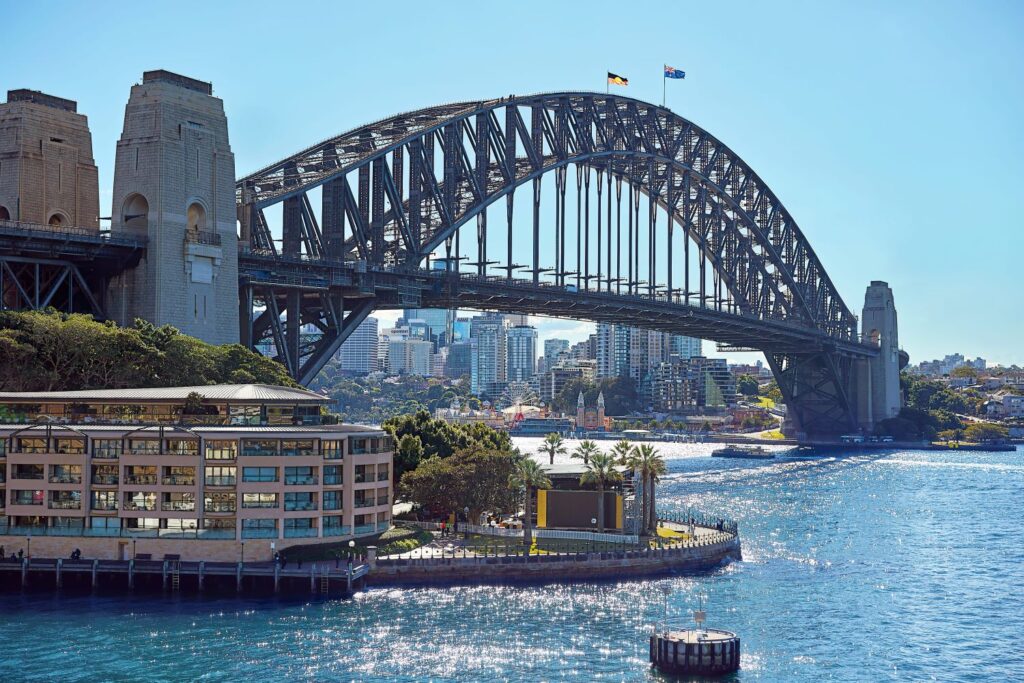
#6. The Pinnacles
Located in Nambung National Park in Western Australia, the Pinnacles is an otherwordly desert landscape with thousands of limestone pillars rising from the golden sands. Mother Nature created this natural work of art over thousands of years, rising in size from small stones to towering structures. If you manage to visit this Australian landmark destination, don’t forget your camera, as the fascinating interplay of light and shadow from the structures makes for some great imagery.
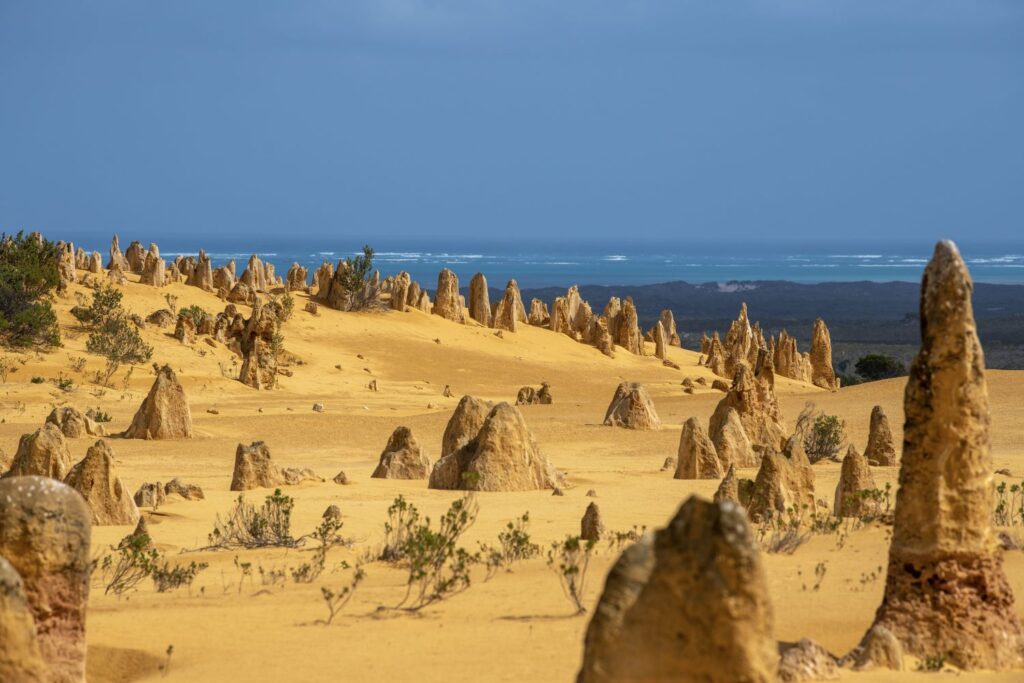
#7. Bondi Beach
Nestled in the eastern suburbs of Sydney in New South Wales, Bondi Beach is an iconic Australian landmark boasting golden shores and reliable surf breaks. Sunseekers, surfers and locals alike converge to Bondi for the coastal atmosphere. Which fortunately, is close by to vibrant cafes, restaurants and the famous Bondi Icebergs Pool. Lifeguards patrol the beach here, and many visitors stroll the Coogee Coastal Walk here for its great views.
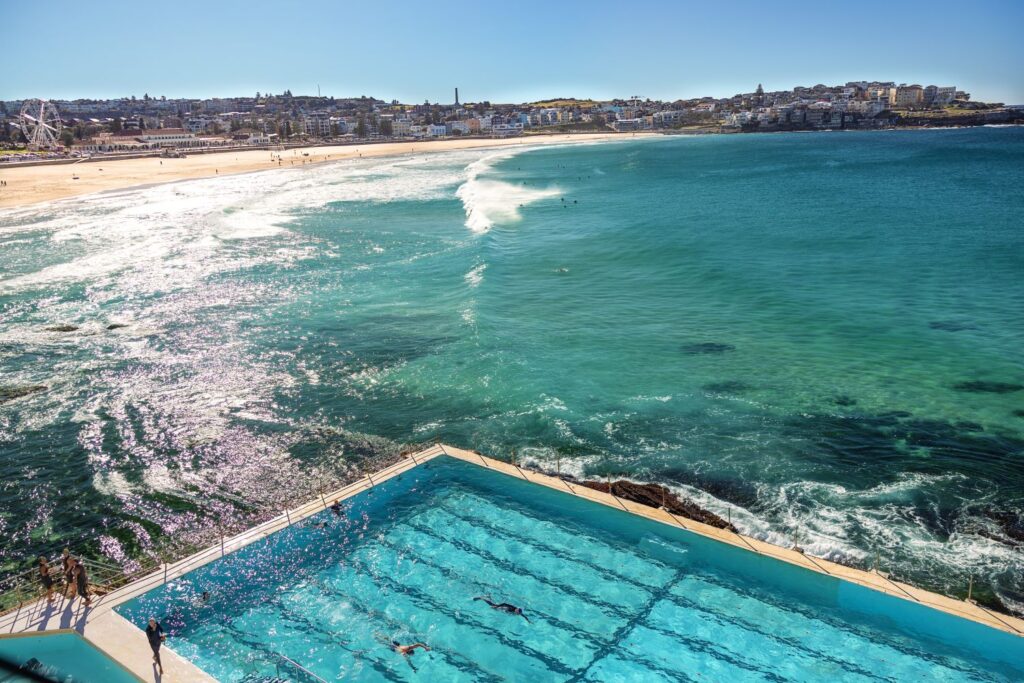
#8. Royal Exhibition Building and Carlton Gardens
Find the Royal Exhibition Building surrounded by the lush Carlton Garden in Melbourne, Victoria. This 19th-century Australian landmark was completed in 1880, and like many other Aussie icons, it also has UNESCO World Heritage status. The building showcases exquisite Victorian-era design with a grand dome and elegant interiors. As a result, it has hosted significant events, such as Australia’s first Parliament in 1901.
The Carlton Gardens surrounding the building are designed in the English landscape tradition. Together, the ensemble continues to be a reminder of Melbourne’s rich heritage and a hub for exhibitions and events.

#9. Kakadu National Park
Another UNESCO World Heritage Site, Kakadu National Park, can be found in Australia’s Northern Territory. This Australian landmark is famous for its biodiversity and cultural significance. Kakadu covers nearly 20,000 square kilometres and boasts diverse ecosystems from ancient rock formations to wetlands. Here, you’ll find Aboriginal rock art that dates back thousands of years and a rich heritage preserved by the Bibinj/Mungguy people. Adventurous visitors love Kakadu for its unique wildlife, including saltwater crocodiles and the opportunity for hiking, cultural experiences and boat cruises.
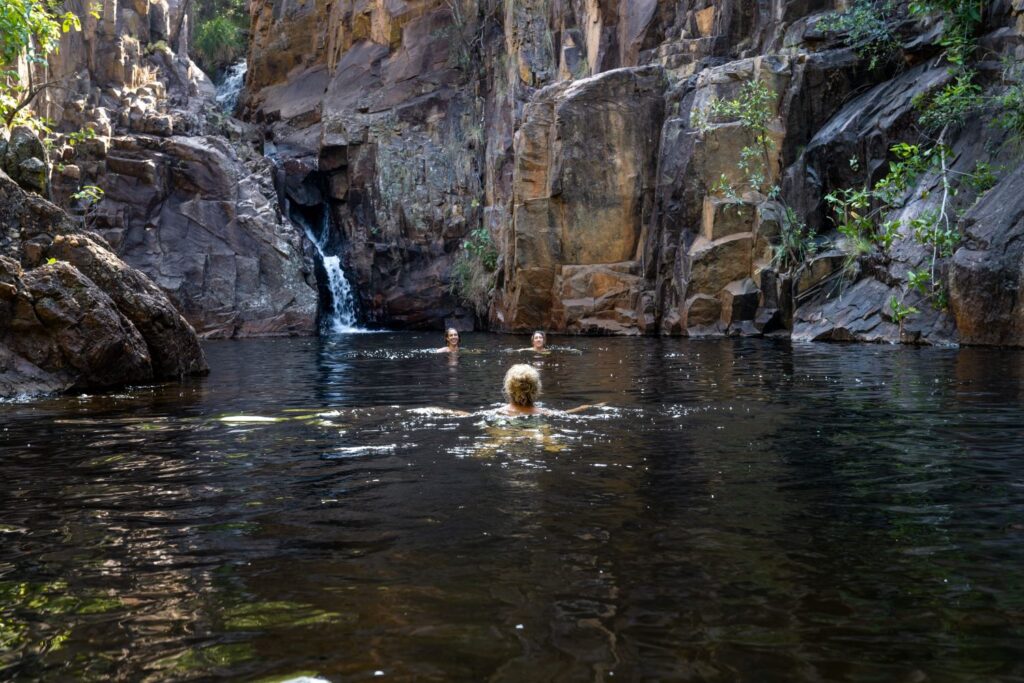
#10. The Daintree Rainforest
With one of the planet’s oldest tropical rainforests, the Daintree Rainforest in Queensland is a UNESCO World Heritage site not to be missed. When we say old, we really mean it. It dates back over 135 million years! Spanning around 1,200 square kilometres, this Australian landmark boasts extraordinary biodiversity, including rare flora and fauna. Visitors can learn about the Kuku Yalanji Indigenous people, explore the lush canopy on elevated walkways, cruise the Daintree River and see ancient plant species.
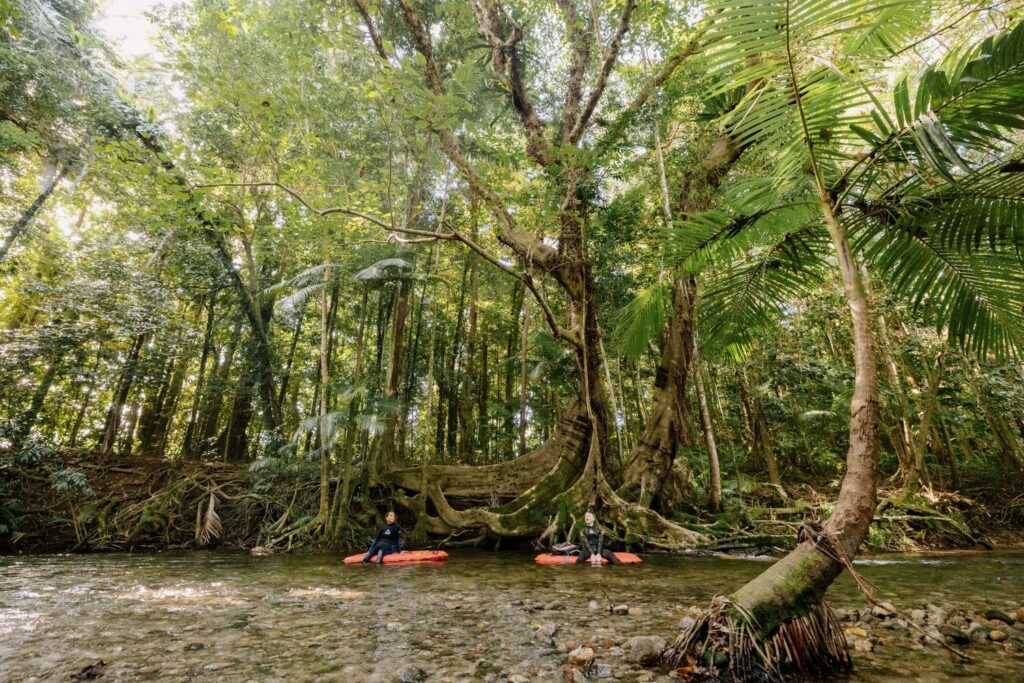
#11. The Blue Mountains
Easily accessible from Sydney in New South Wales, the UNESCO World Heritage area of the Blue Mountains is famous for its deep valley, striking sandstone formations and vast eucalyptus forests. This Australian landmark boasts the iconic Three Sisters rock formation, the Jamison Valley, a thrilling Scenic Railway and a world-renowned hiking trail. You’ll also find ancient rock art, diverse flora and fauna and photo-worthy mist-covered landscapes. Head here if you’re a nature lover and/or an adventure seeker.

#12. Cradle Mountain
Part of the Tasmanian Wilderness World Heritage area, Cradle Mountain and its striking peak can be found in the Cradle Mountain-Lake St Clair National Park in the heart of Tasmania. Its alpine landscapes and rugged beauty have attracted hikers and nature enthusiasts for quite some time, and it is home to the iconic Overland Track. This famous Australian landmark overlooks the glacially-carved Dove Lake, and it’s considered a premier destination for those seeking outdoor adventure and the unspoiled beauty of Tasmania’s wilderness.

#13. Whitehaven Beach
Back up in Queensland, you’ll find the famous Australian landmark that is Whitehaven Beach on Whitsunday Island. Usually, when you see photos of the Whitsundays, they’re off this beach boasting white silica sand and crystal-clear turquoise waters stretching over seven kilometres. Whitehaven Beach consistently ranks among the world’s best and is accessible by boat or seaplane.
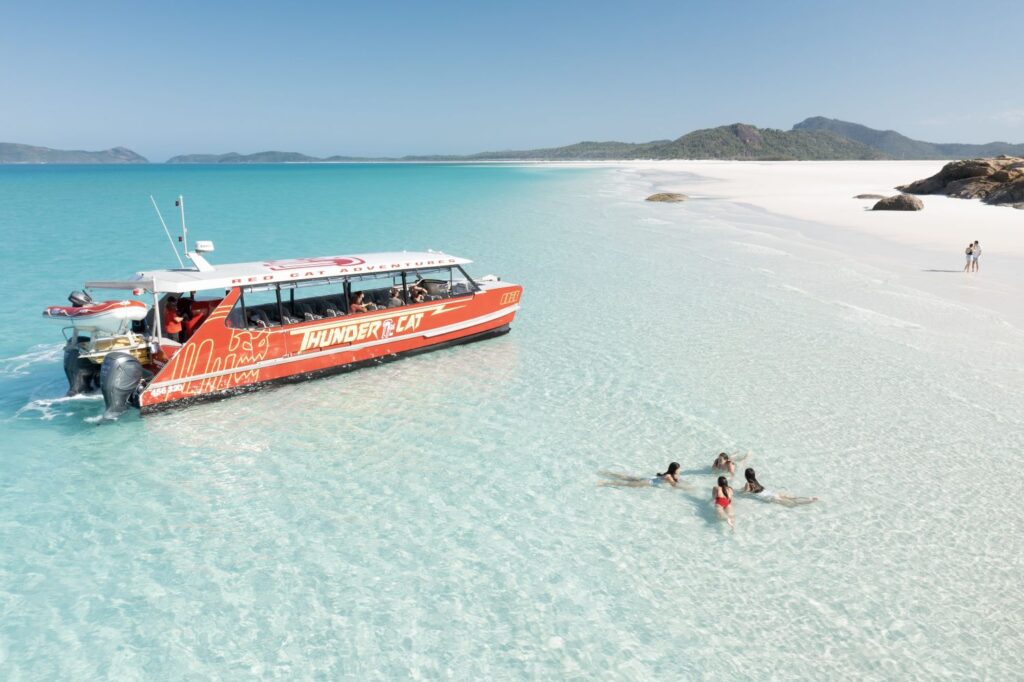
#14. Rottnest Island
Located off the coast of Perth in Western Australia, Rottnest Island is a haven of natural beauty and unique wildlife. This Australian landmark is best known for its adorable quokkas, pristine beaches, turquoise water and coral reefs. Most visitors come here for cycling, swimming, snorkelling and the chance to nab a quokka selfie. No cars are allowed on Rottnest Island, so visitors usually hire a bike or jump on the hop-on-hop-off bus to explore the beaches, historic buildings and World War II sites.
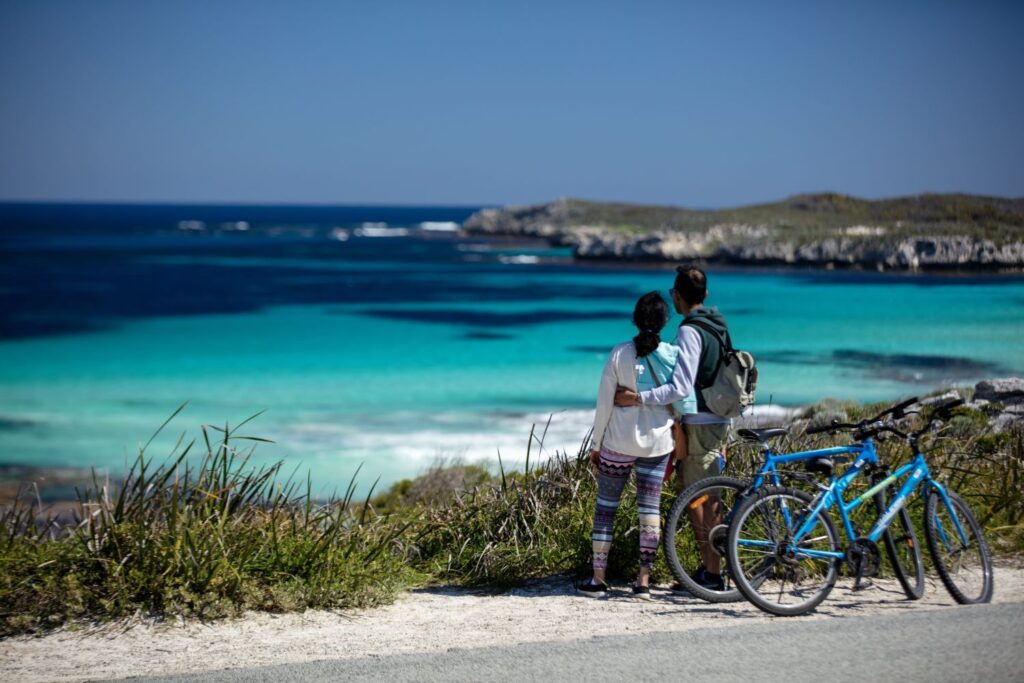
#15. Port Arthur Historic Site
Not only is the Port Arthur Historic Site in Tasmania a famous Australian landmark, but it’s also one of the 11 places that, together, form the UNESCO Australian Convict Sites World Heritage Property. Established in the 19th century, Port Arthur once served as a penal colony. It was known for housing convicts in particularly harsh conditions. These days, it’s a museum and tourist destination that preserves Australia’s convict history through well-preserved ruins and buildings. With an eerie atmosphere, including the well-known Separate Prison and the Isle of the Dead cemetery, it offers a sobering glimpse into the hardships faced by convicts.
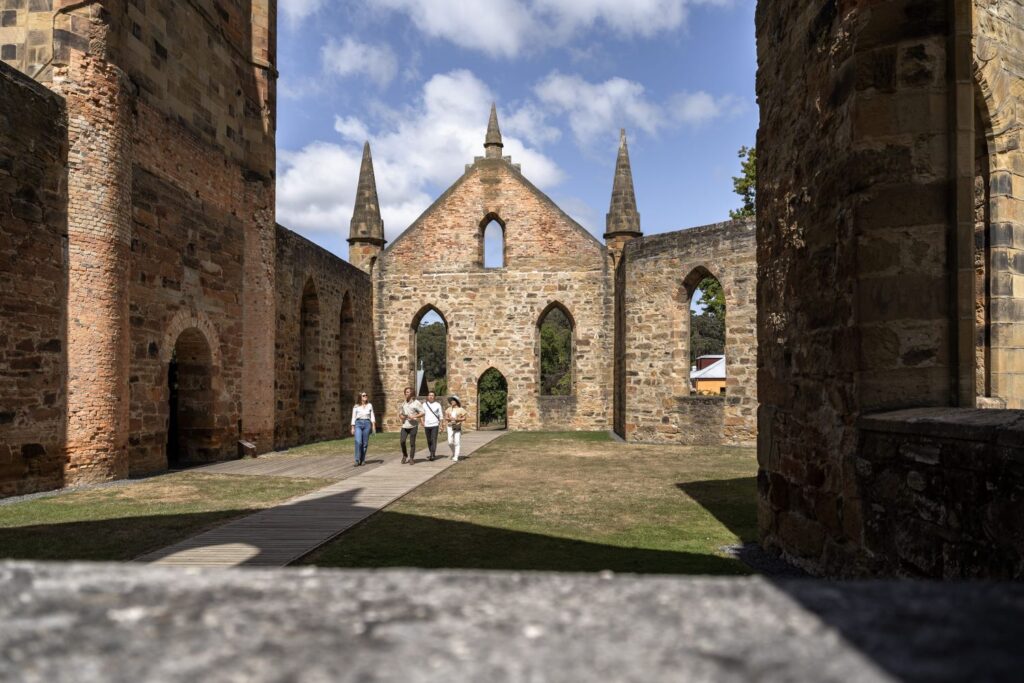
Where to next?
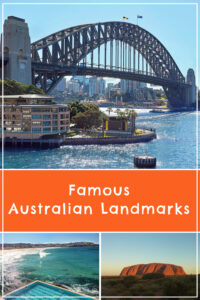

Let me know what you think!